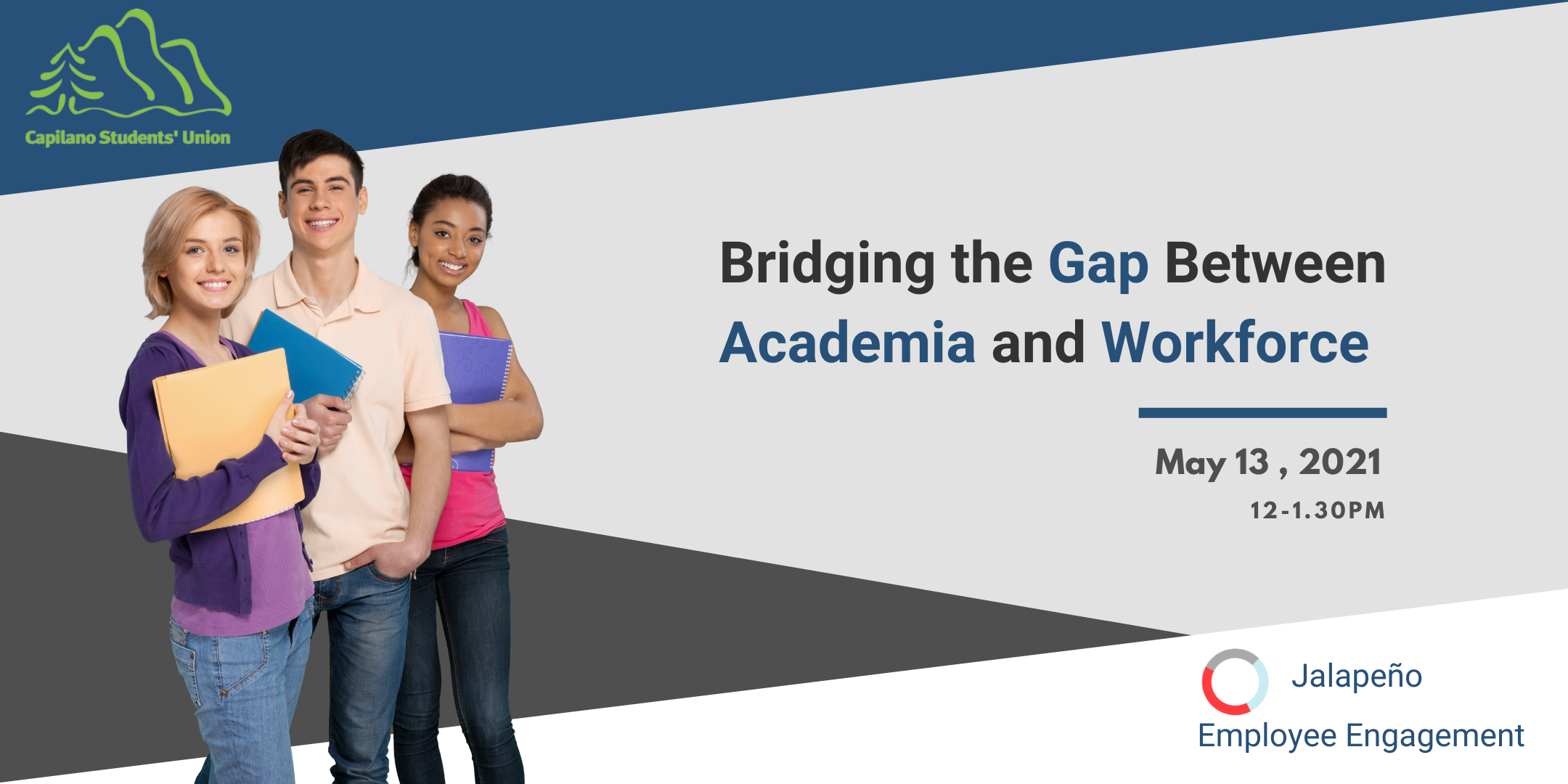Bridging the Gap Between Academia and Workforce

In our 90 min session with Capilano Students' Union on May 13th, 2021 for Capilano University students who are close to graduation and getting into the workforce we discussed the following points:
What is career coaching and why is it important?
How to pick a field to go into; what jobs will you find meaning in?
How to find the right fit (culture, role, industry) while job hunting.
How to navigate ambiguity while transitioning into the workforce.
What are the transferable skills that are not developed in university, but are essential for succeeding in the workplace?
What is career coaching and why is it important
You need career coaching to help you constantly bridge the skill gap:
In August of 2018, there were 7.1 million job openings and 6.2 million unemployed people looking for work. Even if the 6.2 million unemployed were hired, there wouldn’t be enough qualified workers to fill the more than 900,000 jobs still left open. The skills and training job seekers have often doesn’t match the experience required for specialized jobs in the emerging economy. This difference between the skills that employers are looking for and the training and experience that candidates possess is called the “skills gap.”
However, the bulk of the skills gap is the result of an educational system that hasn’t kept pace with the evolving economy. This gap has continued to steadily widen, hurting prospective workers, businesses, and the economy.
How to pick a field to go into; what jobs will you find meaning in?
The world does not consist of just doctors, lawyers, engineers, and teachers, there are many different jobs out there that you are currently not aware of. So how do you know what direction to head towards if you do not know all the options?
Career coaches help you explore different career options, and different career pathways.
It is important to consider what you are passionate about and what you are skilled at when exploring different careers.
How to find the right fit (culture, role, industry) while job hunting.
Determine what you value and compare it to what your company values.
Follow our 3 interviewing tips to assess fit.
How to navigate ambiguity while transitioning into the workforce.
Awareness of how the work world is not structured the same way as the academic world
Main takeaways:
Need to build radical agency
Take ownership of your development
Learn to become comfortable with uncertainty
Need to be agile and adaptable
Normalize imposter syndrome and that you will not have answers for everything (and that’s okay! As long as you have to desire to learn and seek out the solutions)
Emphasize the learning process over the potential outcomes
What are the transferable skills that are not developed in university, but are essential for succeeding in the workplace?
People's financial success depends on 85% Soft Skills (ex. Leadership skills, Negotiation skills, and communication skills) vs. 15% hard skills